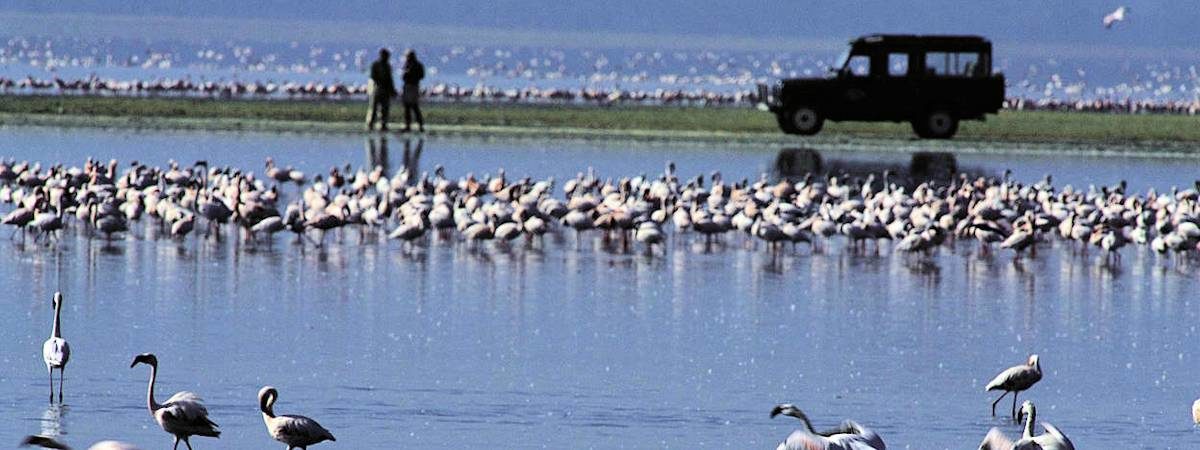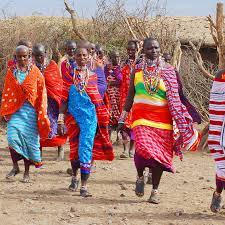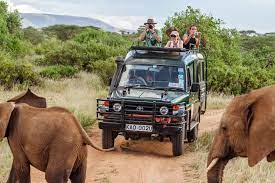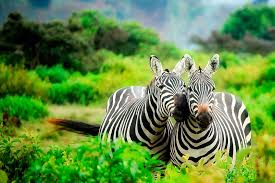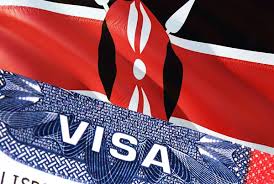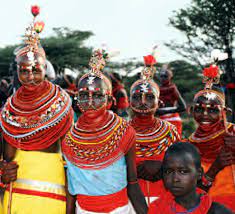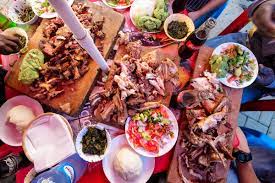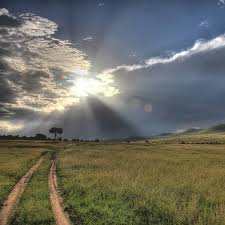Overview
In southwestern Kenya, northwest of the city of Nairobi, is Lake Naivasha. Naivasha is one of many large and small lakes that occupy eastern Africa’s long Rift Valley, a north-south running depression that has formed where the tectonic plates underlying the continent are pulling away from each other. The freshwater lake occupies a very dry part of the country, and its presence makes possible an agricultural industry focused on fruits, vegetable, vineyards, and more recently, flower cultivation for world markets. The increasing development of the land surrounding the lake is evident in this pair of images from the Landsat satellite from 1986 (top) and 2000 (bottom). Vegetation appears green, bare ground or low vegetation appears in shades of pink. Urban development appears purple, and water appears deep blue. The increase in the size of the city of Naivasha to the northeast of the lake (at about 2 o’clock) is apparent. New development has sprung up in the south and southeast as well, where bright, reflective rooftops glimmer in the sun. More signs of cultivated land are visible, including the eye-catching, pie-chart shaped fields north of Naivasha (see high-resolution image from 2000). This increase in agricultural development, particularly the flower industry is being blamed by many for a rapid decline in water levels in the lake. The lake also experiences wide year-to-year fluctuations in surface area because it is shallow and highly dependent on rainfall. Indeed, the apparent general decrease in “greenness” around the lake’s perimeter in the 2000 image may be linked to year-to-year variability, since much of the surrounding terrain is less green as well.
Best Time to Visit
Seasonal changes in equatorial Kenya are defined by the presence or absence of rainfall. During the year, Lake Naivasha experiences two dry seasons and two rainy seasons. The long, cool dry season occurs from July to October and is followed by a short rainy season in November and December.
January and February are the short hot-dry season, and April through June is the long rainy season; though welcoming and departure of rains start around the end of March and early July respectively. Understanding these seasons is an important part of planning your ideal Kenyan safari, as the presence or absence of rain affects vegetation growth for visibility, pasture availability and water levels, as well as wildlife behavior. When vegetation and water sources are abundant, such as during the long rainy season, the animals are more dispersed. During the dry season, though, water and vegetation is scarce, so the animals congregate around the few remaining waterholes.
This behavior affects your wildlife-seeking trip to Lake Naivasha with AfricanMecca because fauna is either more demanding or easily accessible to locate, and you will either see animals scattered across a larger area or variety of animals concentrated in one location. Both the long dry season and long rainy season, though, have advantages and disadvantages. Wildlife viewing is finest during the long, cool-dry season, and the lack of rainfall also means that roads and trails are in good condition for your exploratory Lake Naivasha tour activities. The flora, though, may be less vibrant and lush than during the rainy. Lastly, because the dry season coincides with concentrated wildlife, as well as summer break for European and American families, visitor levels at Naivasha are highest during this time of year. All things considered, we recommend the long dry season as the best time to visit Lake Naivasha, and also when combined with a safari to Masai Mara to view the Great Wildebeest Migration from August to October.
Oddly paralleled to other areas of Kenya, the Lake Naivasha expanse receives some added showers during the cool dry season of July to October. The arrival of the long rainy season that runs from April through May and June brings much-needed moisture and transforms the landscape into a beautiful setting of rich flora. Wildlife is not as concentrated, but the long rainy season coincides with one of the most awe-inspiring events on the plains and forests of Naivasha – the birth of a new generation of animals, especially antelopes like impalas. Behaviors during this time are a thrilling combination of intimate bonding between mother and baby, as well as the anticipation of which babies will survive the challenges of living in the harsh environment. Predators are always on the look-out for the weak and young, and many young animals fall victim to carnivorous hunts, extreme climate conditions and inability to survive the early days in the Kenyan bush. The low or green season is primarily in April and May, and may include most days in June. If you desire a secluded holiday at East Africa’s Lake Naivasha with a renewed freshness of nature at its best, these may be the optimum months to plan your travel There are also reduced prices for accommodations; though logistical costs, conservation fees, activities, guiding services etc. remains constant throughout the year. Visitor levels are an important consideration when planning your time in Kenya with , and certain festive holidays bring an influx of local and worldwide tourists to Lake Naivasha, including Christmas, New Year’s and Easter.
Getting There
- There are frequent matatus from Nairobi (1½ hr, Ksh 200-300)
- The train from Nairobi takes around 4 hr leaving Nairobi at 6:30PM and Naivasha at 4:55AM.
- The bus or matatu fare from Naivasha to Nakuru is Ksh 180 and the trip takes one hour.
Activities
Take a boat safari
The most popular attraction at Lake Naivasha is undoubtedly the chance to take a guided boat safari out onto the water. Dead trees reach up out of the cool blue water like grasping hands as a huge assortment of bird life moves about. Everything from pelicans to cranes to smaller, more brightly coloured birds are on display. The waters themselves are home to wallowing hippopotamuses, and along the shores, you’ll spot Cape Buffalo and other herbivores.
Walk with the animals at Crescent Island
Easily combined with the boat safari, a visit to the Crescent Island Sanctuary offers a rare chance to literally walk with the animals. The island sanctuary isn’t home to any predators, so you can safely trade the safari car for your own two feet as you wander alongside zebras, giraffes, and wildebeest!.
Uniqueness
lsamere
Museum in Lake Naivasha
Stippled with sisal, yellow fever trees and candelabra euphorbia, this is the former home of the late Joy Adamson of Born Free fame. She bought the house in 1967 with her husband George and did much of her painting, writing and conservation work here until her murder in 1980. Guests can attend regular screenings of a flickering 1970s film about Joy’s life and her myriad love affairs, notably with Elsa the lioness.
Leaflet | Map data © OpenStreetMapcontributors, CC-BY-SA, Imagery © >Mapbox
There’s also a fascinating museum housed in the couple’s former master bedroom, brimming with cloth-bound animal-behaviour manuals, dusty typewriters, photographs and Joy’s art. In the yard, the vehicle in which George was shot dead sits empty.
Entry includes high tea (with cakes) on the peaceful lawn, and front-row seats to study the resident black-and-white colobus monkeys. You can also visit the conservation centre in the grounds, or even stay here in one of the lovely garden rooms.
Crescent Island
Top choice wildlife reserve in Lake Naivasha
This private island sanctuary can be reached by boat, or by driving across the narrow, swampy causeway from Sanctuary Farm. It’s one of the few places in the Rift Valley where you can walk among giraffes, zebras, waterbucks, impalas and countless bird species. Lucky visitors might even spot a leopard, but don’t count on it. Island walks, led by a guide, last between 90 minutes and three hours. It’s also a good spot for a picnic lunch.

